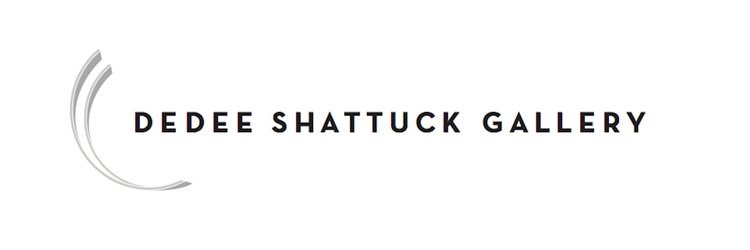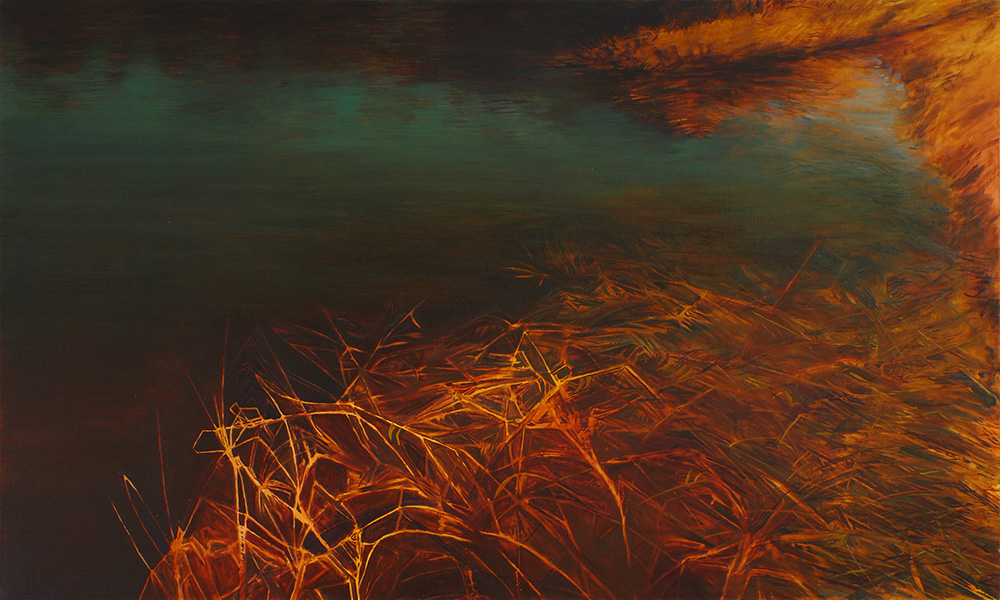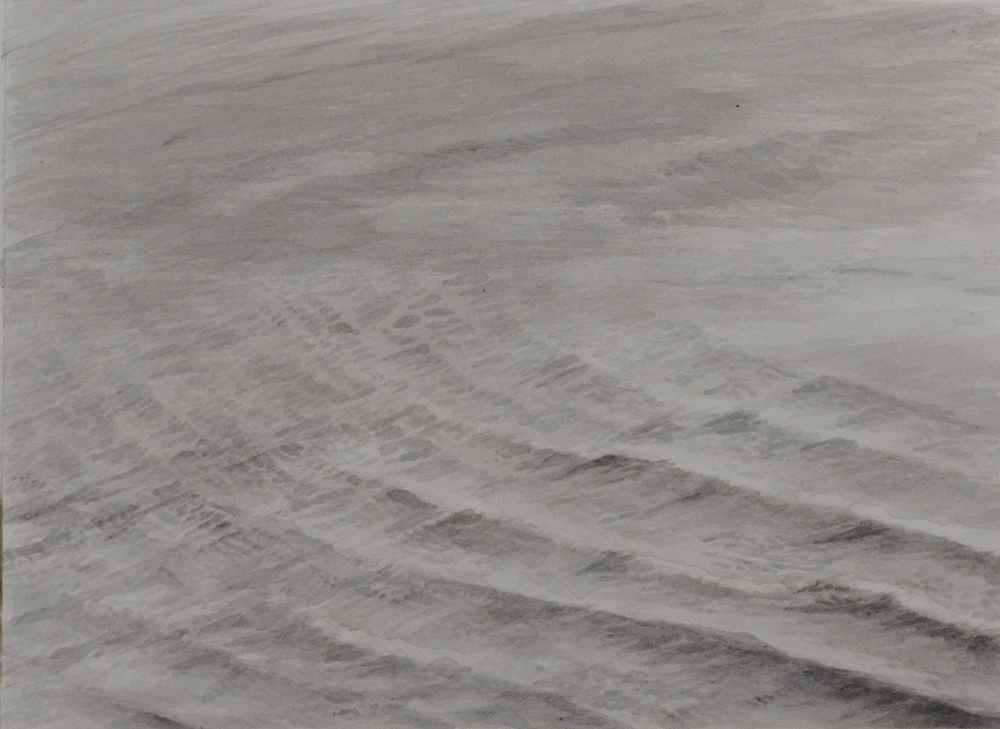Brooke Lanier
"Whatever you spend a lot of time thinking about becomes important. Paying intense attention to overlooked details of the natural world elevates mundane things like the patterns of weeds and reflections of different conditions of water to a place that demands notice. Enlarging these often-ignored instances of intricate beauty and isolating them from the distractions of their normal surroundings draws attention to them.
There is so much to see that it is overwhelming trying to notice all of the little things that make a scene uniquely beautiful, even if it is just a pile of dead weeds. It is a matter of seeing, of noticing the relationships of color, light, and pattern that unlock the image. Part of it is a willingness to slow down.
Many of the paintings in this body of work contain conspicuously empty areas surrounded by areas of careful pattern and detail. The absences underscore the importance of what remains and vice versa. Traditional landscape paintings, which function as artificial windows into nature, are actually man-made interventions housed in constructed environments. The walls on which they hang might be in neighborhoods where weeds are the only plant life or there is no body of water for miles. It is therefore all the more necessary to appreciate the beauty of what vestiges of the natural world remain.
The appearance of water changes according to your vantage point. When you’re looking right down at it, you see the bottom, and the farther out, the more the water reflects everything else: the water quality itself, the color of the water, the turbulence, and everything all at the same time, and it all comes together in this pattern. Wherever you go in the world, water behaves in a reliable manner in terms of its patterns of movement and reflection.
Regardless of whether I’m painting plants or water, I’m always searching for relationships within the image that I might not have noticed. It is sort of a compulsion to make sense of something that seems impossibly complex and chaotic. If you stare at something long enough, the hope is that it will begin to make sense. Sometimes it happens during the making. I start to notice elements that line up in a certain way, and those things intersect with another line of logic such as a change in scale or a shift in color. Once I see the patterns, everything makes sense."
-brookelanier.com



